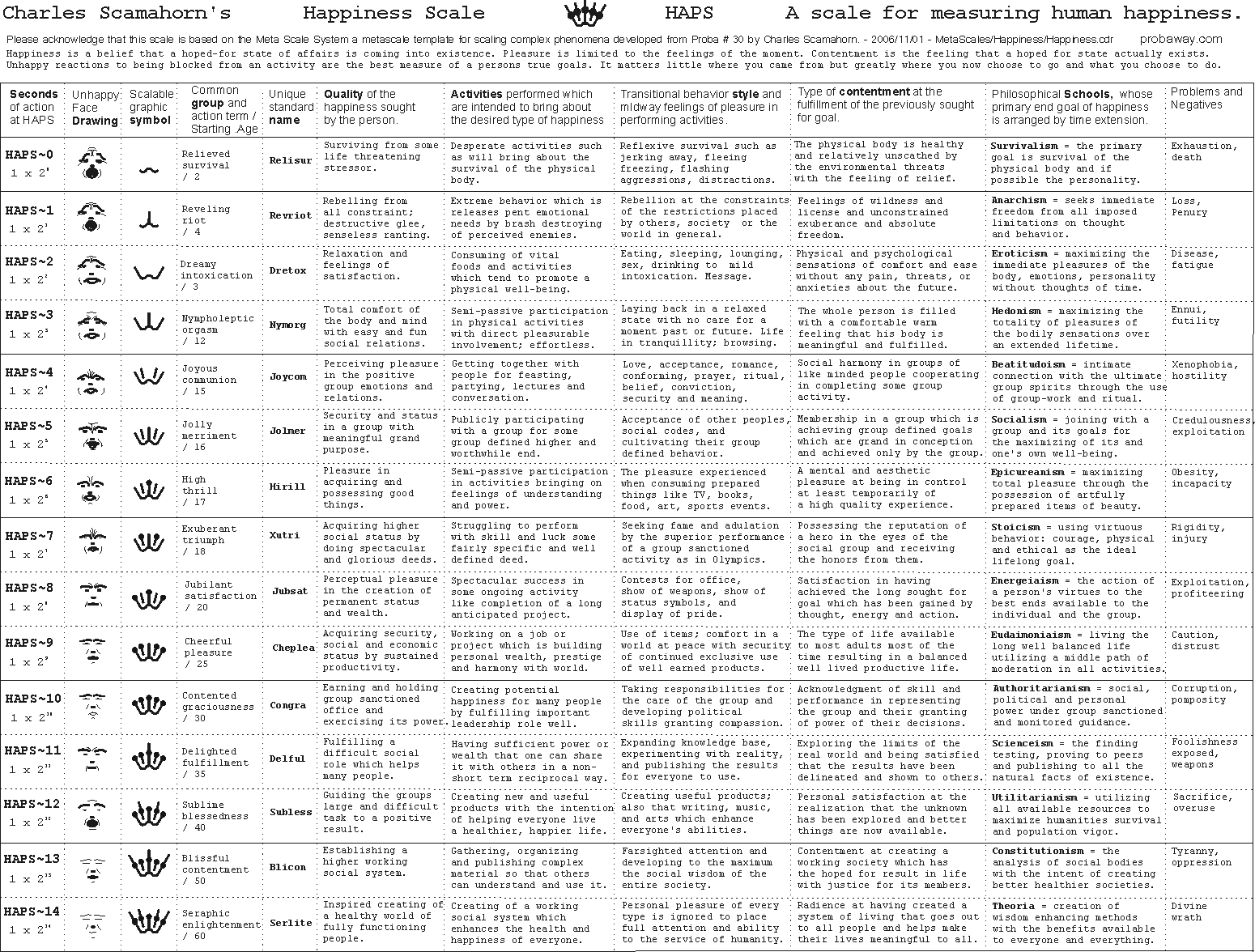Happiness Metascale
by Charles Scamahorn © 2005
Happiness . . . is a chart for measuring and comparing happiness with some
suggestions for achieving success. Click here for a nice, 11"x8.5" printable
PDF file of the chart below.Or here for a 11"x17" PDF.

Happiness Comments
The ancient Greeks thought that happiness was an achievement but most modern people have associated
it with short-term pleasure. This chart has emphasized that ancient interest in the long-term
aspects of human vitality so the impact of a person's actions are set into a more historical
perspective. The issues that matter most are issues about living our human lives in the most
vital way possible and not about momentary feelings or desires. The chart is so constructed that
the vertical columns on the left concern more observable, immediate concepts such as having a smiley
face and the right columns refer to more abstract satisfactions and results. Or alternatively, the
horizontal lines read from top to bottom emphasize the time-binding quality of the various
philosophical approaches. In either case it appears that a time aspect is one of the major dimensions
permeating this happiness chart. In the short term happiness doesn't seem to have the extensive
linear range of physical feelings that the sensation of pain does. See the Probaway Pain Scale chart. Pain can be sensed from barely perceptible thru various
stages of tolerable to unbearably intense. But happiness seems to go from simple pleasures,
like eating ice cream, to long-term social pleasures like being accepted into a group. A physical happiness
continuum might be from bodily sensations thru long-term self-satisfactions, thru family, to
helping, community service, public service, world service, but the higher levels don't show much on a person's face.
In Victorian England a happy life was one in which they earned money, made something of their
lives such that things were an appropriate reward for their effort, ambition, and achievement. But just having pleasure or stuff was not all that they really wanted. Study Charles Darwin (1809–1882), or Alfred Russel Wallace (1823-1913); their
motivations seem to have little to do with pleasure. One pathetic moment for Wallace was when he
was bedridden in an Indonesian jungle, and a particularly desirable butterfly flitted past; he
couldn't pursue it because his feet were so inflamed and swollen that he couldn't walk and he wrote
bitterly about the experience. For him the greater pain, he wrote in "The Malay Archipelago"
(1862), was being prevented from the pursuit of an abstract goal, a butterfly.
- UNESCO 2006/11/ article on happiness.
- My Mind On Books for Happiness books & resources.
- Wikipedia article on happiness with links.
Liability disclaimer statement: These Probaways contain new and unique information that has been
created, tested and retested by me alone. You must approach these findings and materials very
carefully as your results may differ greatly from my experience and I can offer no recompensation
of any kind for any injuries.

This work is licensed under a Creative Commons Attribution-Noncommercial-No
Derivative Works 3.0 License.

